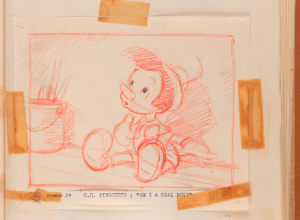December 27, 2011 |
Casanova Exhibition at the National Library of France
 The original manuscript of Casanova's lively memoir is on display for the first time at the National Library of France. It is the centerpiece of a new exhibition called "Casanova--the Passion for Freedom," which is open to the public through February 19, 2012 in Paris.
The original manuscript of Casanova's lively memoir is on display for the first time at the National Library of France. It is the centerpiece of a new exhibition called "Casanova--the Passion for Freedom," which is open to the public through February 19, 2012 in Paris.Casanova was an Italian by birth, but lived in France before getting himself expelled from Paris in 1760 after seducing various wives and daughters of the French royal court. Casanova's adventures led him back and forth across Europe until his death at age 73 in Bohemia in 1798. Casanova completed his 4,000 page memoirs shortly before he died.
 Upon his death, Casanova bequeathed his memoirs to his nephew. In 1821, the German publisher Friedrich Arnold Brockhaus purchased the manuscript on the cheap from Casanova's family, who were hit hard by an economic recession. Brockhaus subsequently published a censored translation in German. A pirated French edition quickly followed. Brockhaus then published an official French edition, translated (and again censored) by Jean Laforgue. And so editions of Casanova's memoirs began to spring up around Europe, all translations of other edited, censored editions. No one but Brockhaus had access to the original manuscript, which was held in Leipzig until World War II. The manuscript was widely believed to have been lost during the 1943 bombing of Leipzig, but they were secretly saved by the publishers at the last minute. In 1945, American troops drove the manuscript to safety in Wiesbaden. The first original, uncensored edition of the manuscript was published in French in 1960 as a collaboration between Brockhaus and Pion.
Upon his death, Casanova bequeathed his memoirs to his nephew. In 1821, the German publisher Friedrich Arnold Brockhaus purchased the manuscript on the cheap from Casanova's family, who were hit hard by an economic recession. Brockhaus subsequently published a censored translation in German. A pirated French edition quickly followed. Brockhaus then published an official French edition, translated (and again censored) by Jean Laforgue. And so editions of Casanova's memoirs began to spring up around Europe, all translations of other edited, censored editions. No one but Brockhaus had access to the original manuscript, which was held in Leipzig until World War II. The manuscript was widely believed to have been lost during the 1943 bombing of Leipzig, but they were secretly saved by the publishers at the last minute. In 1945, American troops drove the manuscript to safety in Wiesbaden. The first original, uncensored edition of the manuscript was published in French in 1960 as a collaboration between Brockhaus and Pion. What happened next to the manuscript reads like the plot of a thriller novel: In 2007, the French ambassador to Germany contacted Bruno Racine, head of the National Library in France, to say that an undisclosed intermediary wished to meet to discuss selling Casanova's manuscript. A secret meeting in the Zurich airport followed, where Racine confirmed the manuscript to be authentic. France soon declared the manuscript a "national treasure" and set about attempting to finance the acquisition--an undertaking that would eventually require $9.6 million--the highest price ever paid by a French library for a single item.
That $9.6 million dollar manuscript is now viewable by the public at the National Library in Paris until February 19. For those who can't make the trip overseas, the National Library plans to digitize the manuscript in the near future and make it freely available online.















